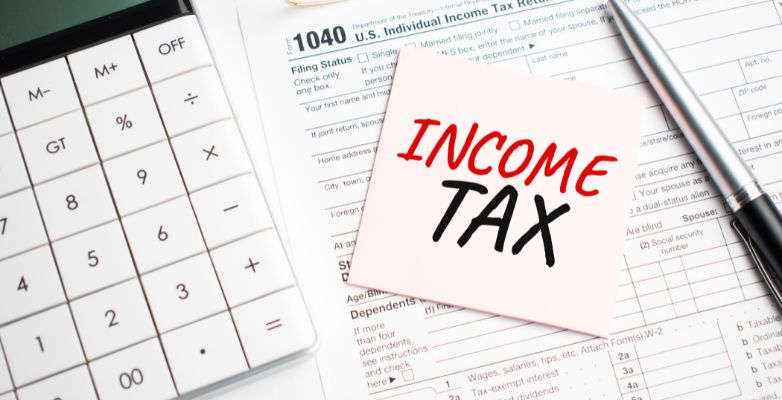The Provision for Income Tax is the amount of money a company expects to pay in taxes during the current year. To calculate this, adjustments are made to the company’s net income, accounting for temporary and permanent differences, and then this figure is multiplied by the applicable tax rate.
A tax provision represents the amount a company expects to owe in income tax to the IRS for the current year. It’s just one piece of the puzzle in the financial planning of a business. Corporate finance departments also set aside provisions for other foreseeable expenses such as bad debts, depreciation, product warranties, pensions, and sales allowances.
In the world of accounting, tax provisions are classified as current tax liabilities. This categorization is due to these funds being designated for taxes expected to be paid within the current year. However, the process of calculating tax provisions isn’t as straightforward as it may seem. Striking the right balance between efficiency, accuracy, and defensibility can be quite a challenge. Estimating the tax provision for each year demands a substantial amount of time and effort from corporate tax departments.
Table of Content
- 1 Here’s How We Calculate the Provision for Income Tax
- 2 Advantages and Disadvantages of this Provision:
- 3 How Do You Go About Calculating a Tax Provision?
- 4 Challenges in Calculating the Income Tax Provision
- 5 Steps to Improve the Tax Provision Calculation
- 6 How to Prepare Yourself Effectively for Tax Provision Calculations?
- 7 Conclusion
- 8 Frequently Asked Questions
- 8.1 What exactly is Provision for Income Tax, and why should businesses care about it?
- 8.2 How does one go about calculating Provision for Income Tax, and what sorts of things can shake it up?
- 8.3 Can a company use its Provision for Income Tax as a financial cushion?
- 8.4 What’s the difference between permanent and temporary differences in the world of Provision for Income Tax?
- 8.5 What kind of trouble can inaccurate Provision for Income Tax calculations stir up?
- 8.6 When should a business think about getting some pro help with their Provision for Income Tax?
Here’s How We Calculate the Provision for Income Tax
A company’s tax provision can be broken down into two main components: current income tax expense and deferred income tax expense. However, things get a bit tricky because most accounting departments follow Generally Accepted Accounting Principles (GAAP) to determine their financial status. GAAP procedures have their unique nuances compared to income tax accounting rules, and these distinctions significantly influence how current and deferred income tax expenses are computed.
Provision for Income Tax Formula = Income Earned Before Tax * Applicable Tax Rate
Key Points to Remember:
- The company creates the provision from its current profits to cover future tax obligations.
- It considers the applicable tax rate for the given period.
- The provision is established by accounting for differences in the company’s net income, both permanent and temporary.
- There’s typically a time gap between when the provision is created and when it’s paid. During this interim period, the company can use it as a source of short-term financing.
Example of Calculating the Provision for Income Tax:
Certainly, let’s break down the concept of Provision for Income Tax with an example:
Imagine Company XYZ, which operates in the field of technology, recently concluded its financial year on December 31, 2022. The prevailing income tax rate for the year is 25%. Let’s calculate the profit before tax based on the provided financial details and determine the required income tax provision.
Here are the financial figures for Company XYZ:
- Total Sales: $3,000,000
- Cost of Goods Sold: $1,800,000
- Administrative Expenses: $500,000
- Distribution Expenses: $200,000
- Interest Expense: $120,000
- Rental Income: $50,000
Step 1: Calculate Profit Before Tax
To calculate the profit before tax, we need to sum up the relevant figures:
- Profit Before Tax = (Total Sales – Cost of Goods Sold) – (Administrative Expenses + Distribution Expenses + Interest Expense – Rental Income)
- Profit Before Tax = ($3,000,000 – $1,800,000) – ($500,000 + $200,000 + $120,000 – $50,000)
- Profit Before Tax = $1,200,000 – $770,000
- Profit Before Tax = $430,000
So, Company XYZ’s profit before tax for the financial year ending December 31, 2022, is $430,000.
Step 2: Calculate the Provision for Income Tax
Now, let’s determine the provision for income tax by applying the tax rate:
- Provision for Income Tax = Profit Before Tax * Tax Rate
- Provision for Income Tax = $430,000 * 25%
- Provision for Income Tax = $107,500
Therefore, Company XYZ should make a provision for income tax amounting to $107,500 for the financial year ending December 31, 2022. This ensures that they are prepared to meet their tax obligations when they become due, considering the applicable tax rate.
Advantages and Disadvantages of this Provision:
Advantages
- Short-Term Financing: The company sets aside this provision from its current profits to meet its future tax obligations. There’s often a time gap between when the provision is made and when it’s paid. During this period, the company can use this provision as a source of short-term finance. This doesn’t involve any extra costs or legal formalities.
- Future Liability Awareness: By creating the provision for income tax, the company prepares in advance for its future tax liabilities. This awareness benefits all stakeholders by ensuring they know about the impending tax obligations.
Disadvantages:
- Short-Term Use: This provision serves as a source of short-term financing and can’t be used to meet long-term financial needs.
- Excess Provision: Sometimes, companies may overestimate the provision for income tax, resulting in underutilized funds. These funds could have been put to more productive use in other areas.
How Do You Go About Calculating a Tax Provision?
Getting an accurate handle on the precise amount of income tax you owe can be a time-consuming endeavor. This is where having accounting experts in your corner can be a real asset, freeing you up to concentrate on expanding your business.
However, it’s still a wise move to have a basic understanding of tax provisions when you’re at the helm of a business. So, let’s simplify the process of computing corporate tax provisions under Accounting Standards Codification (ASC) 740. ASC 740 outlines the guidelines for how companies should recognize income tax in their financial statements.
Current Income Tax Expense
The current tax expense is the amount a company expects to pay in taxes for the present year. To calculate this, we consider the company’s current earnings and the differences between Generally Accepted Accounting Principles (GAAP) and income tax rules for the current year. Here’s a simplified breakdown of how we arrive at the current income tax provision:
- Start with Net Income: Begin with the company’s net income, which is its income before income taxes, calculated according to GAAP.
- Identify Permanent Differences: These are income or expenses not allowed for income tax purposes but permitted under GAAP. Permanent differences, like fines, entertainment expenses, municipal bond interest, and life insurance proceeds, remain constant.
- Recognize Temporary Differences: Temporary differences are income or expenses allowed under either GAAP or income tax rules in one year but not in the other. We find these by comparing the current year’s balance sheet against GAAP and tax calculations. Common examples include unpaid expenses and depreciation.
- Apply Credits and Net Operating Losses (NOL): After considering these differences, we determine the current year taxable income. We can then apply any tax credits and Net Operating Losses (NOL).
- Apply the Current Tax Rate: Multiply the current year taxable income by the prevailing federal tax rate to calculate the company’s current year tax expense for the income tax provision.
Deferred Income Tax Expense
Deferred income tax is a liability on the balance sheet that isn’t due for payment yet. This aspect of the income tax provision calculates a cumulative total of temporary differences and applies the relevant tax rate. It focuses on the deferred effects of income, expenses, NOL, and tax credits. Once calculated, the deferred tax expense is recorded on the company’s balance sheet as an asset or liability, depending on whether it anticipates owing taxes or receiving a tax benefit in the future.
Challenges in Calculating the Income Tax Provision
Calculating the tax provision is intricate and comes with its set of challenges. Tax teams often encounter these common calculation issues:
- Timing Mismatch in Income Reporting: Accurate calculations rely on starting with the correct net income figure, which can be challenging when companies report income annually or quarterly.
- Data Collection and Integration: Gathering and integrating data from finance and tax departments, and ensuring its proper structuring, can be complex.
- Managing a High Volume of Data: Even straightforward calculations require tax experts to scrutinize items like annual reports, financial statements, tax payments, and net income.
- Adapting to Tax Law Changes: Changes in tax laws can impact calculation formulas, necessitating a constant awareness of new regulatory requirements.
- Over-Reliance on Manual Processes: Using spreadsheets and manual processes to calculate the corporate tax provision can slow down the process and increase the risk of inaccuracies.
Steps to Improve the Tax Provision Calculation
To enhance tax provision calculations and results, consider the following steps:
- Data Management: Efficiently collect and analyze data to improve the accuracy of tax provision calculations.
- Use Tax Provision Checklists: Tools like the Thomson Reuters Corporate Income Tax Provision Checklists can help assess income tax measurement processes, disclosure requirements, and risk management controls.
- Review Compliance: Thoroughly examine the tax provision calculation process to ensure the correct criteria are applied.
- Automation: Implement tax provisioning solutions that automate data collection, consolidation, and analysis, reducing laborious tasks and enhancing accuracy.
How to Prepare Yourself Effectively for Tax Provision Calculations?
Navigating the terrain of tax provisioning and financial reporting can be quite a challenge. Given the intricate nature of these calculations, even the tiniest errors can quickly escalate into significant discrepancies. These discrepancies not only lead to incorrect filings but also carry the risk of fines, interest charges, and, in extreme cases, regulatory actions.
To ensure you’re on the right track, consider using a tax provision checklist. This checklist can help you methodically address all the necessary aspects when estimating your tax liability. Here are the key areas to focus on:
1. Framework for Risk Assessment and Control
- Evaluate internal risk factors.
- Examine external risk factors.
- Review the standard reporting package.
2. Accounting Requirements for Income Tax Measurement
- Analyze unrecognized tax benefits.
- Understand current income tax procedures.
- Know about the deferred income tax procedures.
- Assess valuation allowances.
- Explore special areas related to income taxes.
3. Presentation and Disclosure of Income Taxes
- Delve into accounting for income taxes during interim periods.
- Check off the financial statement presentation requirements.
- Go through the income tax disclosure checklist.
Conclusion
In conclusion, Provision for Income Tax is a vital financial measure companies use to prepare for their tax obligations. It’s established by adjusting both permanent and temporary differences in the company’s net income for the period, based on the applicable tax rate. This provision serves as a short-term financial source during the gap between its creation and payment, enabling companies to manage their tax liabilities efficiently. However, it’s important to note that this provision is suitable for short-term financial needs and not for long-term financing. Companies should also be cautious about overestimating this provision, as it can lead to underutilization of their funds. If you need assistance with these financial matters, don’t hesitate to seek professional advice.
Frequently Asked Questions
What exactly is Provision for Income Tax, and why should businesses care about it?
Provision for Income Tax is like a financial safety net that companies create to prepare for their future income tax obligations. It’s a big deal for businesses because it helps them stay ready for tax bills, avoid financial shocks, and stay on the right side of the law.
How does one go about calculating Provision for Income Tax, and what sorts of things can shake it up?
Calculating this provision involves using the tax rate that applies to your business and making adjustments for differences between how you do your accounting and how the tax folks do it. Factors like changes in tax rules, shifts in income, and clever tax planning can all have a say in this calculation.
Can a company use its Provision for Income Tax as a financial cushion?
Absolutely, but there’s a catch. You can tap into this money for short-term needs between creating the provision and paying your actual taxes. Just remember, it’s a short-term fix, not a long-term solution for your financing needs.
What’s the difference between permanent and temporary differences in the world of Provision for Income Tax?
Permanent differences are things that affect your tax bill but are never counted when figuring out how much tax you owe. Temporary differences are all about timing – they might impact your tax bill this year and your financial income next year.
What kind of trouble can inaccurate Provision for Income Tax calculations stir up?
Messing up these calculations can lead to all sorts of financial headaches: mistakes in your financial records, incorrect tax filings, penalties, and interest charges. In the worst-case scenario, it can even land you in some legal hot water.
When should a business think about getting some pro help with their Provision for Income Tax?
If you’re dealing with tricky tax situations, or new tax laws, or you’re just not sure what you’re doing, it’s a good time to call in the experts. Tax professionals can give you the guidance you need to make sure your provision calculations are spot-on and in line with the rules.




